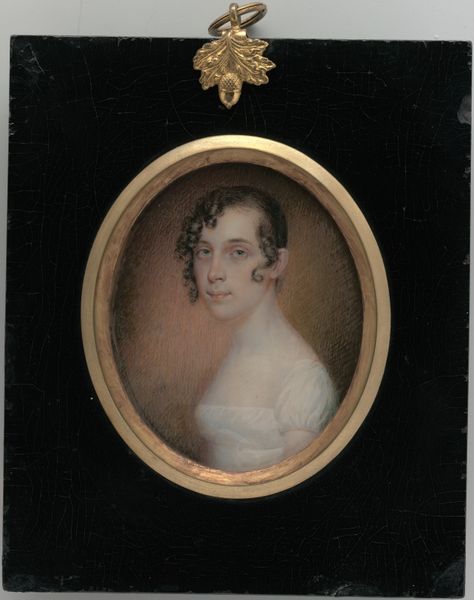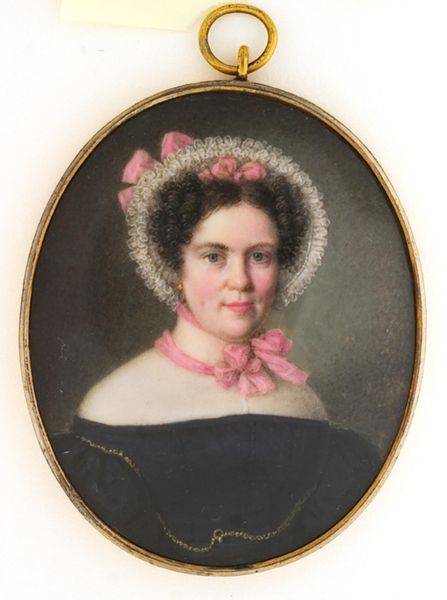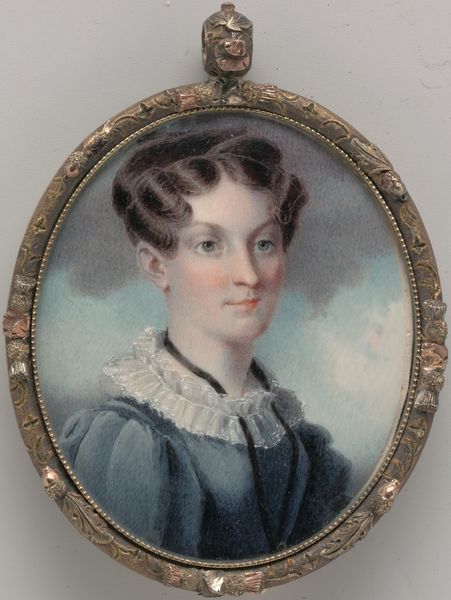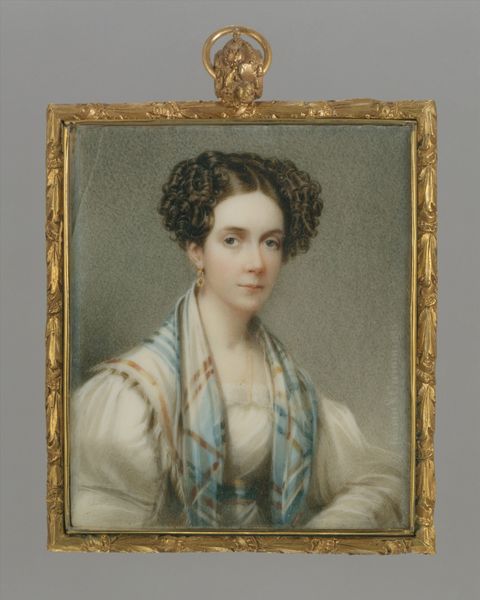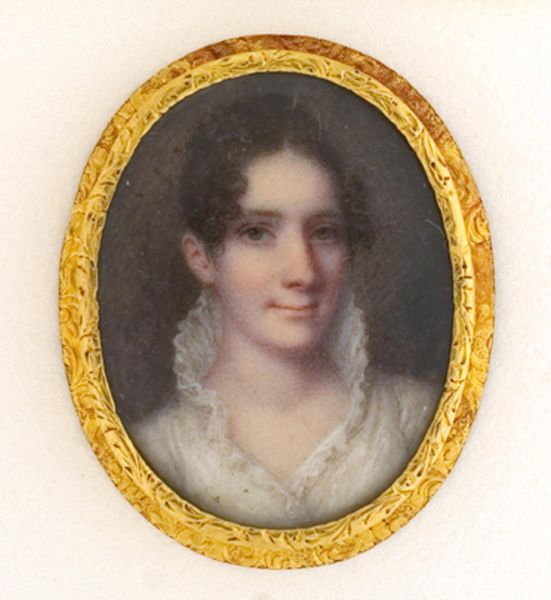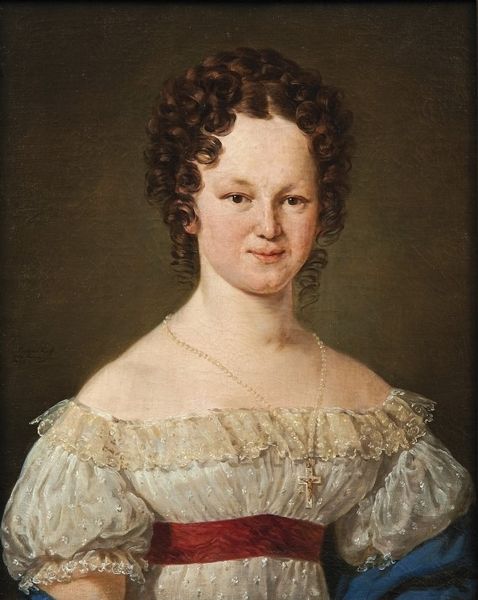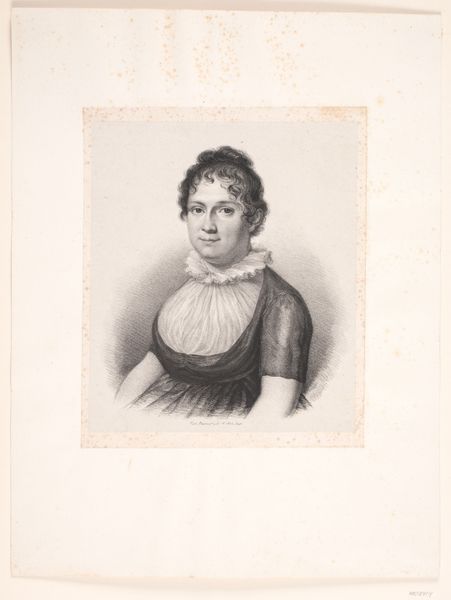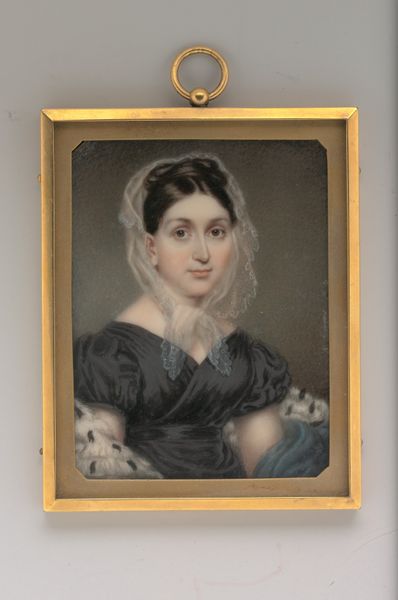
oil-paint
#
portrait
#
oil-paint
#
figuration
#
oil painting
#
romanticism
#
history-painting
#
miniature
Dimensions: Sight: 3 7/16 x 2 9/16 in. (8.7 x 6.5 cm)
Copyright: Public Domain
Curator: This is a fascinating oil-on-panel miniature portrait. It’s entitled "Portrait of a Lady" and was created by Alvan Clark, likely between 1832 and 1835. You can find it on display here at the Metropolitan Museum of Art. Editor: It has an immediacy to it, doesn’t it? Quite petite and yet very striking. I’m immediately drawn to the way the blue of the dress contrasts with the dark background and gold frame, which accentuates the small, personal scale. Curator: Miniatures like this served a very particular purpose. In an era before photography, such portraits played a vital role in memorializing loved ones or forging social connections, serving as a status symbol and familial record. Consider who could afford to commission such a work. Editor: The craftsmanship seems quite refined, particularly with the details in her dress— the lace-like pattern suggests the use of meticulous brushwork. And yet, I’m curious about the process behind such small paintings. Were they commonly collaborative? What role did women artisans play in miniature production during this period? The texture, if you look closely, is very interesting too. Curator: While collaboration wasn’t unheard of, it was likely created solely by Clark. In his time, there was a growing emphasis on art academies, which impacted what materials and tools artists would employ; those schools would promote an approved range. Though he's better known as a telescope maker, Clark made quite a few portraits! His social circles likely boosted demand for his paintings. Editor: Ah, that background in crafting precision optical instruments certainly speaks to the detail on display. I’m curious, did his scientific work influence his artistic approach, maybe making him look at light and texture in novel ways for portraiture at the time? Curator: It's hard to know exactly the nature of those relationships, but that interdisciplinary background speaks volumes to the era. What I appreciate most is how miniatures created opportunities for different forms of social exchange and patronage, playing an integral role in self-representation and commemorative culture. Editor: It is interesting to think how technological and social contexts were already then profoundly shaping creative outputs, be it in the tools that enable certain productions or the conditions that call forth new social functions of art. Curator: Precisely! This miniature provides us not just a likeness of its subject, but also of the early 19th century social fabric that brought the image into being. Editor: Definitely. A rich condensation of both skill and context. Thanks for sharing, it gives a deeper appreciation of the social and technical means for its production.
Comments
No comments
Be the first to comment and join the conversation on the ultimate creative platform.
